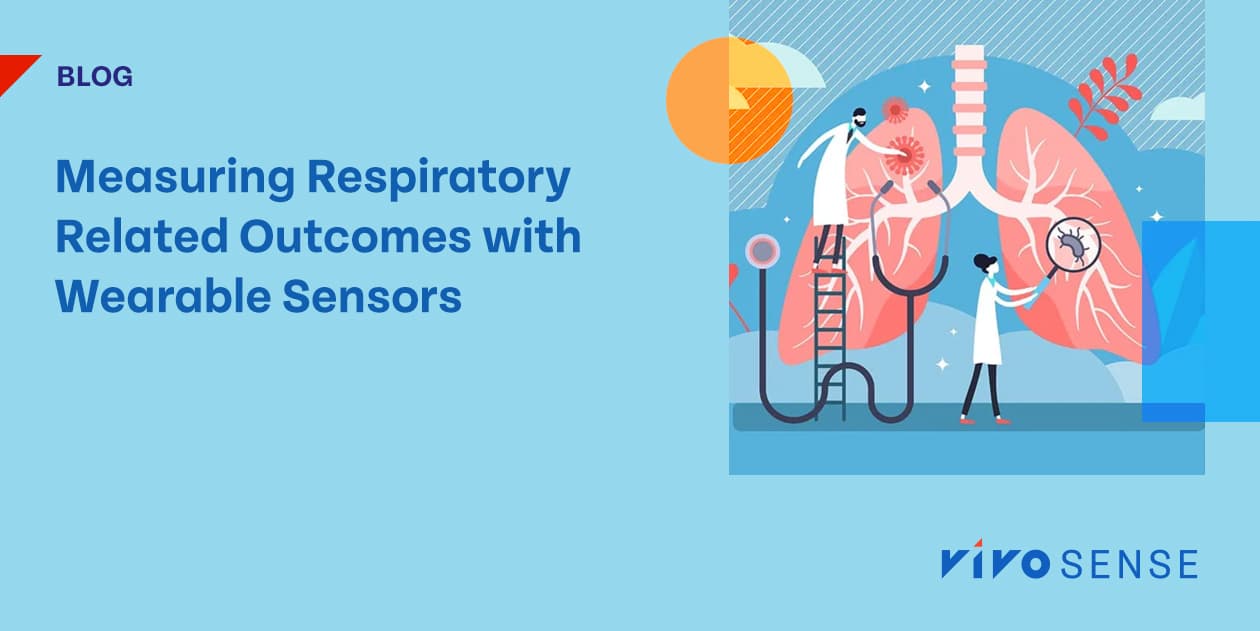
Respiratory abnormalities characterize a variety of disorders. In addition to physical disorders, ventilation is profoundly affected by mental and psychophysiological states, including stress, anxiety, and panic disorder. Let’s take a look at respiratory-related health issues and the promising wearable technology available to assess respiratory outcome measures in real-world settings.
Spirometry; The Standard Test for Assessing Respiration
Spirometry is a test typically used to assess ventilation in clinical disease, with outcome measures such as FVC and FEV1. These measures require effort-dependent tests that may be challenging to perform. Careful attention to the procedure, including; blocking the nose, ensuring no airflow is escaping around the mouth, and coaching and encouragement are needed to extract an optimal reading.
Home-based digital spirometry is available and has been used in clinical trials as a secondary endpoint. However, the measurements are not passive and will not identify transient events such as apneas or tachypnoea that may be meaningful clinical respiratory events. For this reason, abnormal breathing events during everyday living cannot be assessed with these methods.
Assessing Real-World Respiration; The Role of Wearable Digital Health Technology
Passive and continuous monitoring of respiration requires a wearable sensor that can be used passively in real-world environments. Continuous monitoring enables the measurement of transient events missed by spirometry and provides a basis for measuring environmental and continuous changes and trends in respiration.
Dual-band respiratory inductance plethysmography (RP) sensors are the gold standard for continuous, unobtrusive respiratory monitoring. Studies have presented good agreement between measurements taken using RP and direct measurements using spirometry or pneumotachography. RP is widely used in clinical and research settings – principally in polysomnography (sleep studies). Thoracic and abdominal bands allow measurements of both breathing compartments, providing accurate volume and phase relation measurements in addition to the commonly assessed respiration metrics of rate and timing.
RP technology can be deployed in a comfortable shirt enabling compliant use in rare disease and clinical populations with respiratory irregularities such as COPD and Rett Syndrome.
Other digital technologies may also be used to assess respiratory rates and timing:
- • ECG Derived Respiration (EDR) measures respiratory rate and timing monitored at rest or during sleep using a single lead ECG sensor. Standard ECG patch sensors can be worn continuously, recording data passively for 7 to 14 days, and provide additional cardiorespiratory measures such as heart rate.
- • Photoplethysmography (PPG) is used to detect sleep apneas and respiratory events resulting in decompensation. Similar to EDR identification, measurements are taken at rest or during sleep.
- • Audio may provide continuous measurement of cough frequency and intensity monitored with contact microphones combined with air microphones. Audio technology may be used to detect cough and wheezing in asthma and other respiratory abnormalities such as Cystic Fibrosis (CF).
Outcome Measures That Can Be Assessed
Typical respiratory-related outcome measures from digital technology include:
- • Cough Frequency and Intensity
- • Resting Respiratory Rate
- • Phase Relation (Chest and abdominal wall movement)
- • Respiratory Timing
- • Orthopnea (Shortness of breath)
- • Apnea and Hypopnea
Determine what characteristics you are interested in measuring. Understand how it’s traditionally defined and measured, what wearable sensor modalities can capture it, and what level of evidence exists to support the use of that modality in the patient population of interest and setting of measurement.
Visit our digital endpoints page to learn more about measuring components of respiration in real-world settings. We’ll help you select the best continuous monitoring wearable sensor and to obtain the most clinically meaningful outcome measures.
Dudley Tabakin
Dudley Tabakin, MSc. is Chief Executive Officer and co-founder of VivoSense and a fervent believer in “good data” over “big data” in the development of digital endpoints from wearable sensor technology.

